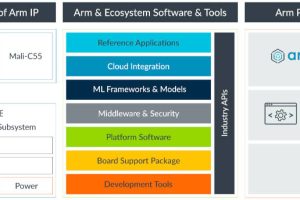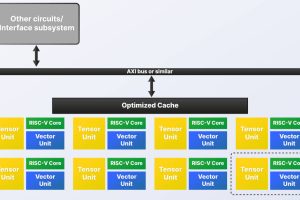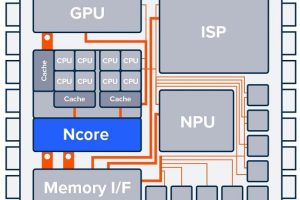“We can see a lot of growth in the fundamental IP business coming from two directions – new applications and new technologies,” Warren East, ARM’s CEO, told EW.
“We have high market penetration in mobile phones, moderate penetration in hard disc controllers and digital cameras, and a small market share in microcontrollers and automotive,” said East.
New applications in automotive and digital consumer electronics – both the hot-spots of the current chip upturn – offer considerable potential.
One of the new technologies ARM has bubbling away in development is a reconfigurable VLIW DSP core called OptimoDE.
“We think OptimoDE will grow to significantly measurable revenues over the next three years – to the tens of millions a year level,” said East, “we’re working on turning OptimoDE from a niche into a standard to make it more widely applicable. Currently it is being used in WLAN and digital audio applications.”
ARM obtained OptimoDE through its acquisition of part of Adelante, a Philips spin-off, last year. Adelante had been formed in 2001 from a Philips team working on novel DSP architectures and a Belgian DSP company called Frontier Design to license its DSP core on the same business model as ARM.
The OptimoDE architecture is sparing of transistors. ARM said that a core performing three MPEG2 algorithms – inverse scan, DCT, and motion compensation – can be implemented in 60,000 gates.
“OptimoDE is turning on its head the way you deal with DSP,” said East, “instead of taking the algorithm and fitting it to the processor, you take the algorithm and fit the processor to the algorithm.”
The core Risc business is still humming. “We did 14 licence deals in the last quarter,” said East, “five of which were with people who had never bought a licence before. Four years ago we announced our per-use business model and 63 of the companies which have bought single-use licences have, collectively, bought 100 uses.”
Putting multiple ARM cores on one chip is a trend which ARM is supporting with its symmetric multiprocessing project. “The idea is that you’ll be able to programme a multi-processor SoC as though it’s just one machine,” said East. The project is due to complete within 12 months.
So, reports of the death of the IP business model appear to have been exaggerated.
 Electronics Weekly Electronics Design & Components Tech News
Electronics Weekly Electronics Design & Components Tech News



